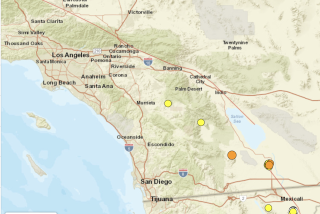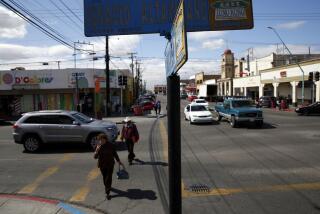A mountain-building process at work in Peru
- Share via
The same forces that formed the Andes produced the magnitude 8 earthquake that struck Peru’s southern desert region Wednesday evening: the collision of two massive tectonic plates along South America’s western coast.
The Nazca plate under the eastern Pacific Ocean is ramming into the larger South American plate at a rate of about 3 inches a year, one of the fastest rates in the world, according to geophysicist Paul Earle of the U.S. Geological Survey’s National Earthquake Information Center.
As the Nazca plate dives under the coastal plate, it forces the ground upward, forming the mountains and releasing tremendous amounts of energy. That makes the region one of the most seismically active and the source of frequent massive temblors.
The two plates are merging offshore in a process called subduction, which has formed the 5-mile-deep Peru-Chile trench about 100 miles off the coast.
The earthquakes that result from the subduction are called megathrust quakes because the surface is being thrust upward, and they are the most powerful earthquakes on the planet. Typically, the land will rise a few yards in the region of the epicenter.
In 1956, a magnitude 8.2 quake occurred just to the north of the site of Wednesday’s quake. A magnitude 7.7 quake struck just south of the epicenter in 1996 and an 8.4 hit farther south in 2001.
In 1868, a 9.0 earthquake killed several thousand people in Peru and caused tsunami damage as far away as Hawaii.
“People think of the San Andreas fault as very active, but there are places in the world like this that are much more active,” Earle said.
Although the 50-mile-thick Nazca plate is sliding under the South American plate at a more or less constant rate, relatively small sections of the convergence zone get hung up and the subduction is halted until the pressure builds up and the blocked section snaps free, catching up with the rest of the plate and producing an earthquake.
In Wednesday’s quake, a section about 120 miles long broke free, Earle said. In general, the longer the section that breaks, the greater the magnitude of the quake.
The epicenter was about 25 miles below the surface, Earle said.
--
More to Read
Sign up for Essential California
The most important California stories and recommendations in your inbox every morning.
You may occasionally receive promotional content from the Los Angeles Times.













